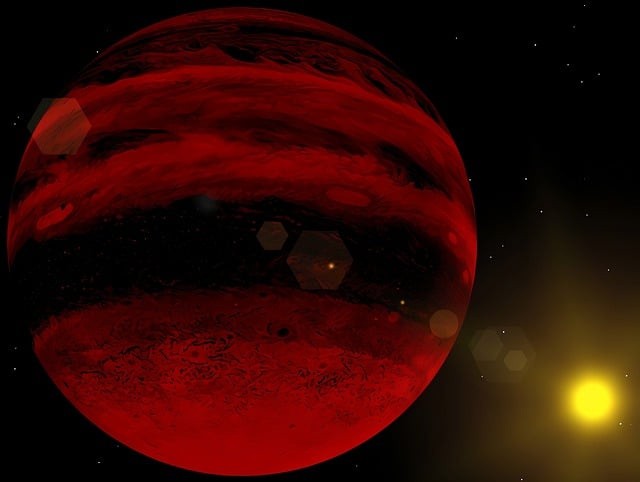Astronomers from the University of Hawaii Institute for Astronomy (UH IfA) have discovered a Jupiter-like planet, Halla, surviving near its red giant star, Baekdu. While stars like Baekdu usually engulf nearby planets, Halla persists at half the distance between Earth and the Sun.
According to Science Daily, observations from the W. M. Keck Observatory and the Canada-France-Hawaii Telescope revealed that Baekdu had already expanded into a red giant once before, potentially engulfing Halla at 1.5 times its orbital distance before shrinking to its current size.

An Extraordinary Survivor
The study, titled "A Close-in Giant Planet Escapes Engulfment by Its Star" published in Nature" emphasizes the extraordinary survival of Halla in close proximity to a star that would have typically consumed it. The findings shed light on the catastrophic consequences of planetary engulfment and offer hope for planets that defy their imminent demise as their host stars age.
In 2015, Korean astronomers initially discovered the planet Halla using the radial velocity method, which detects the periodic movement of a star caused by the gravitational pull of an orbiting planet. The finding indicated that the star must have been larger than Halla's orbit at some point.
To delve further into this intriguing discovery, the UH IfA team conducted additional observations from 2021 to 2022. They utilized the High-Resolution Echelle Spectrometer (HIRES) at the Keck Observatory and the ESPaDOnS instrument at CFHT.
These follow-up observations confirmed the stability of Halla's nearly circular orbit, which lasts approximately 93 days, and verified that the radial velocity changes were indeed caused by the presence of a planet.
Daniel Huber, an astronomer from IfA and the second author of the study, highlighted the significance of these combined observations from various telescopes on Maunakea in confirming the existence of Halla. This confirmation raised an intriguing question regarding the planet's survival and sparked a further investigation into the extraordinary circumstances that allowed it to endure.
The collective efforts of the Korean astronomers and the IfA team, supported by data from multiple telescopes, shed light on the existence and stability of Halla, pushing scientists to explore the exceptional conditions that enabled the planet's persistence. This ongoing research contributes to our understanding of planetary formation and the factors that influence their long-term survival.
READ ALSO : Astronomers Find Jupiter's Identical Twin Exoplanet 17,000 Light-Years Away Using Kepler Space Telescope
How Did the Planet Survive?
Located at a distance of 0.46 astronomical units from its star, which is nearly half the distance between Earth and the Sun, the planet Halla shares similarities with "warm" or "hot" Jupiter-like planets that orbit closely around their stars. These gas giants are believed to have formed further away from their stars before migrating inward over time.
However, considering the highly dynamic nature of its host star, it seems highly improbable for Halla to have endured the process of being engulfed by an expanding red giant star. Dr. Huber expressed doubts about Halla's survival under such circumstances in a news release.
The team proposed that the star Baekdu was originally a binary system, similar to Tatooine from Star Wars, and the merger of the two stars prevented either one from growing large enough to engulf the planet.
Alternatively, Halla might be a "second generation" planet, born from the gas cloud resulting from the collision between the two stars. This discovery challenges current knowledge about the evolution of planets and stars, offering hope that planets can endure even in the face of their aging host stars.
This finding also emphasizes the potential for more planets to exist around highly evolved stars in binary systems, expanding our understanding of planetary formation in extreme environments.
RELATED ARTICLE:
Researchers Discover Jupiter-Like Exoplanet that Has Complex Weather System
Check out more news and information on Space in Science Times.
© 2025 ScienceTimes.com All rights reserved. Do not reproduce without permission. The window to the world of Science Times.











